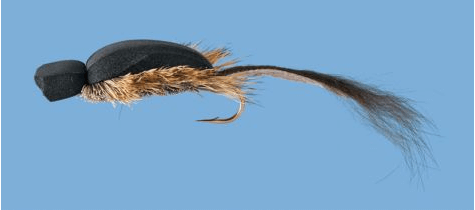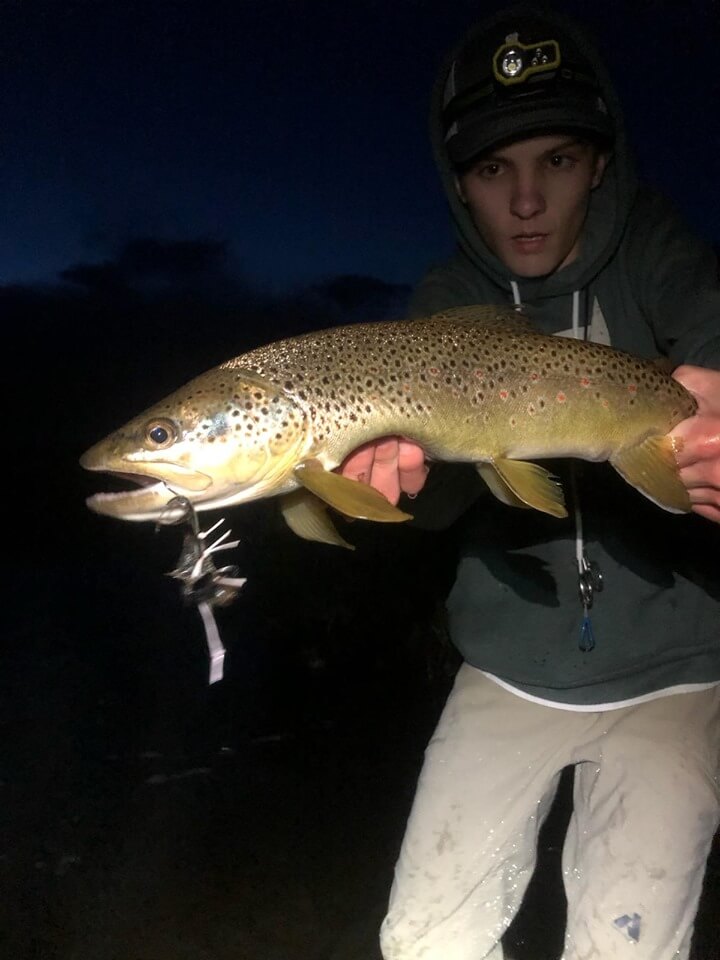It’s 8:30 pm on a late July evening in Western Montana. You just got done with a short after work trip to the river, throwing a dry and putting a few smaller fish to hand, then switching it up to a streamer, but no slam pig brown like you’ve always dreamed of. The sun is just starting to tuck behind the mountains, so you figure you’d better head back towards the car. . . or should you? Is the best trophy trout fishing of the day about to begin? Is that monster of a brown trout just starting to slide out from a deep hole to feed? Well, there’s only one way to find out.

One of the most overlooked methods of fly fishing for big trout around Missoula starts when the sun goes down. It may seem foolish and difficult to fumble around attempting to cast in the dark, but the payout can be extravagant. First, let’s establish why this works, and why it’s worth giving a shot. Big trout, and I mean BIG trout (23-32 inches) didn’t get big by being stupid. After living in a system for anywhere from 7 to 20 years, they know where and when they are in danger from predators, they know what actions put them in a vulnerable position, and they know one simple solution to eliminate these life-threatening factors. Eat. At. Night. Simple as that, feeding after sundown allows big trout to roam nearly any part of the river as they wish without a care in the world about the eagle that lives a quarter mile upstream. However, protection is not the only reason that huge trout choose to feed almost exclusively at night, there is another factor that is more seasonal. As you may have noticed the last time you fished the river in 100 degree weather, trout aren’t too fond of hot water temps. The biggest and smartest fish in the river are no exception. These fish live with 4 things in mind: get big, stay big, make babies, don’t die. The ‘stay big’ portion of this lifestyle is not particularly complimented by exhausting vast amounts of calories trying to chase baitfish through the shallows under the scorching hot sun. The air becomes cool at night in the Missoula area, and so does the water. Yet another reason why the 10+ pound trout of your dreams isn’t sipping BWOs at 2:00pm.
Now that we’ve discussed why this works, lets address how. There are two commonly used methods when it comes to fly fishing at night; mousing/topwater and streamer fishing. In most freestone rivers like the Bitterroot River, Blackfoot River and Clark Fork River, when trout reach a certain size, mayfly nymphs and caddis flies aren’t going to sustain the calorie intake that these pigs require. When the fish reach this point in their life, some will start to shift from a BMI (Benthic Macro Invertebrate) diet, to a baitfish and juvenile fish diet. Not only this, but these trout will also predate on mice, rats, small water mammals, frogs, crawdads, snakes, birds, the list goes on. Anything that offers a significant number of calories, a large predacious trout will eat if it can get its jaws on it. That being said, larger 4-7 inch articulated streamers have become a standard imitation for these large piscivorous trout, and anything from a single hook Moorish Mouse to a triple articulated rat pattern stripped across the surface will go as a rodent imitation. Oh, and ideally bring at least a 6 or 7 weight rod or you’re ‘gonna have a bad time’. Now, it’s not necessarily true that one of these fly selections will work better than the other, because when a trophy trout is the target, it’s more-so about being in the right place at the right time. However, as exciting as it is to hear a 6 pound brown Trout break the silence of the night with a belly flop on a mouse pattern, the number of hookups are less than ideal. If comparing the hookup ratio of a mouse pattern to a streamer, it’s probably 1:5. . . Regardless of which fly option you choose, the strategies that follow both are relatively similar. First off, it all starts with finding the right body of water. You need to find a system that has big fish potential. This can mean a few things. . . the system has at one point or another produced a giant fish or two, the system regularly produces larger fish (say 18-22 inch trout in this case) and you’re looking to uncover something greater, or maybe something as simple as a big fish story. Two crucially important factors that arise while night fishing rivers, is familiarity with the water, and finding safely wadable water. Don’t go trotting out onto a river you’ve never laid eyes on before in the pitch black. Not only can this be incredibly unsafe, but you also will have little clue what you’re casting to, tremendously lowering your efficiency. Keep in mind, it’s important to keep your headlamp off as much as possible, so casting into complete darkness is much easier if you’ve walked the water a time or two in the daylight. Additionally, try and choose a stretch of water where you can either easily navigate the bank, or walk through shallow and calm water that won’t sweep you off your feet and take you for a midnight swim. Now, with disclaimers out of the way, lets say you find a familiar stretch of river that you are convinced will produce a 28” brown trout. Focus on fishing moderate/slower pace water, anywhere near obvious structure or cover such as undercut banks, overhanging trees, downed logs, and rip-rap banks. Another major river feature that should be noted while night fishing, is big shelfs and drop offs. Often, large predatory fish will sit down on the deep end of a drop off during the day to rest. When nightfall hits and they’re ready to feed, they will move up onto the shelf and scan the flat water for minnows and juvenile fish . . . so, don’t be hesitant to pull a streamer or mouse through a stretch of knee deep water. Additionally, big fish will also move into side channels and sloughs where their prey has less room to escape.

From here, there’s only a couple things left to consider; commitment and persistence. Night fishing is different, and not particularly convenient or appealing to the average angler. However, it is by far the most effective manner of targeting big fish exclusively and not worrying about numbers. Furthermore, the determination to pursue a big fish comes with some downfalls. Other than the few giants, most fish usually stop feeding around sunset. This means you’re going to get skunked more times than anyone likes to admit along the journey of chasing a trophy. Those willing to bite the bullet and put fishless (and sleepless) hours on the clock are the ones who will be rewarded. So . . . next time you hit the river for evening outing of fly fishing, bring a few streamers, a couple mice, and a headlamp. Stay a few extra hours and you may be surprised what kind of magic happens after the sun goes down.
We do offer guided fly fishing trips in Montana for Mousing. Due to safety of issues of fishing at night we typically start at first light in the morning which can be one of the best times to mouse. If this is something you would like to do then please give us a call at 1 (406) 728-7766.



